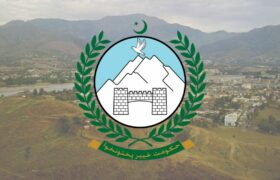The past few months had a catastrophic impact on the global economy as many countries have remained completely locked down. The coronavirus crisis has also hit Pakistan very badly as its economy was already quite fragile and was just emerging from a macroeconomic crisis with the help of an IMF bailout package.
Pakistan observed only two months lockdown from march to May but still was badly affected by the overall corona virus situation triggering a balance of payment crisis. The reserves have further plummeted due to economic meltdown forcing the government to borrow heavily.
Economists predict V, U, W and L-shaped recovery patterns for different countries to balance their GDP with wealth preservation within its boundaries. V and U-shaped recovery are most likely expected in developed countries of the world, W-shape recovery is expected for developing countries, however, the under-developed countries may struggle between L and W shape patterns.
‘V’ is the most optimistic scenario, a sort of trampoline effect. Economic recession and recovery follow a V-shaped pattern when GDP falls steeply for a period and then sharply turns back upwards recovering at a faster pace. ‘U’ shape would imply a more prolonged period of stagnation. GDP falls steeply and gradually bottoms out and then more gradually begins to recover ultimately climbing back to previous levels. This recovery is more likely when the damage of the economic contraction is more severe and disruptive.
‘W’ type recovery is worrying as the former implies a short-lived recovery followed by a further downturn, which might occur due to a second wave of economic setback. ‘L’ is the most alarming type of recovery where economic capacity is permanently wiped out instead of just suspending it.
Hence, a question arises how economy of Pakistan will recover and what pattern it will follow in post pandemic period.
Real GDP Growth data in Pakistan is updated yearly, witnessing an average rate of 4.7 %. The rate reached an all-time high of 7.5 % in Jun 2004 and a record low of 1.6 % in Jun 2010. The rate followed a gradual increase in subsequent years and reach a maximum of 5.8% in 2018. It witnessed a drastic drop to 3.3% in 2019.
Analyzing the whole data, the economy of Pakistan seems to be following the W-shape economic pattern. But it should also be taken into account that we are still in COVID-19 response phase. The lockdown ended with the objective of economic recovery but the outburst of coronavirus with an increased number of reported cases leads to smart lockdown in different parts of the country. Moreover, Pakistan’s COVID-19 emergency cash program disbursed over $440 million to almost 6 million citizens.
Pakistan has announced its annual budget for financial year 2020-21, setting ambitious targets of 2.1% GDP growth, a 7% fiscal deficit and an increase in tax revenues, even as it reels from a surge in novel coronavirus cases. The GDP target is much higher than a recent World Bank projection that Pakistan will have another year of negative growth at -0.2%, while the fiscal deficit will remain 9.4%.
Economy of Pakistan is likely to remain volatile and is expected to stabilize after conclusion of coronavirus pandemic. Moreover, innovative ideas of technological development and productive business can help in saving economy decline. It can create new opportunities for growth of startups across the country and job creation which will serve as a supply chain to the new economy, post-COVID-19.
Some companies may even see opportunities in this crisis, for instance, online games are faring much better in current situation than pre-COVID-19. Companies will need to visualize the shape of their recovery and plan accordingly. It may follow V, U, W, or L pattern depending on market trend and various other reasons.
To maintain economic stability, Pakistan will likely need additional international assistance going forward, by getting increased FDI (Foreign Direct Investment) or development assistance. The assistance will likely be in the form of continued loans from international donors such as IMF and World Bank. It will take years to recover from the current slump due to COVID-19. However, Pakistan needs to carefully craft its future economic policy in order to ensure long term stability and quick recovery.




